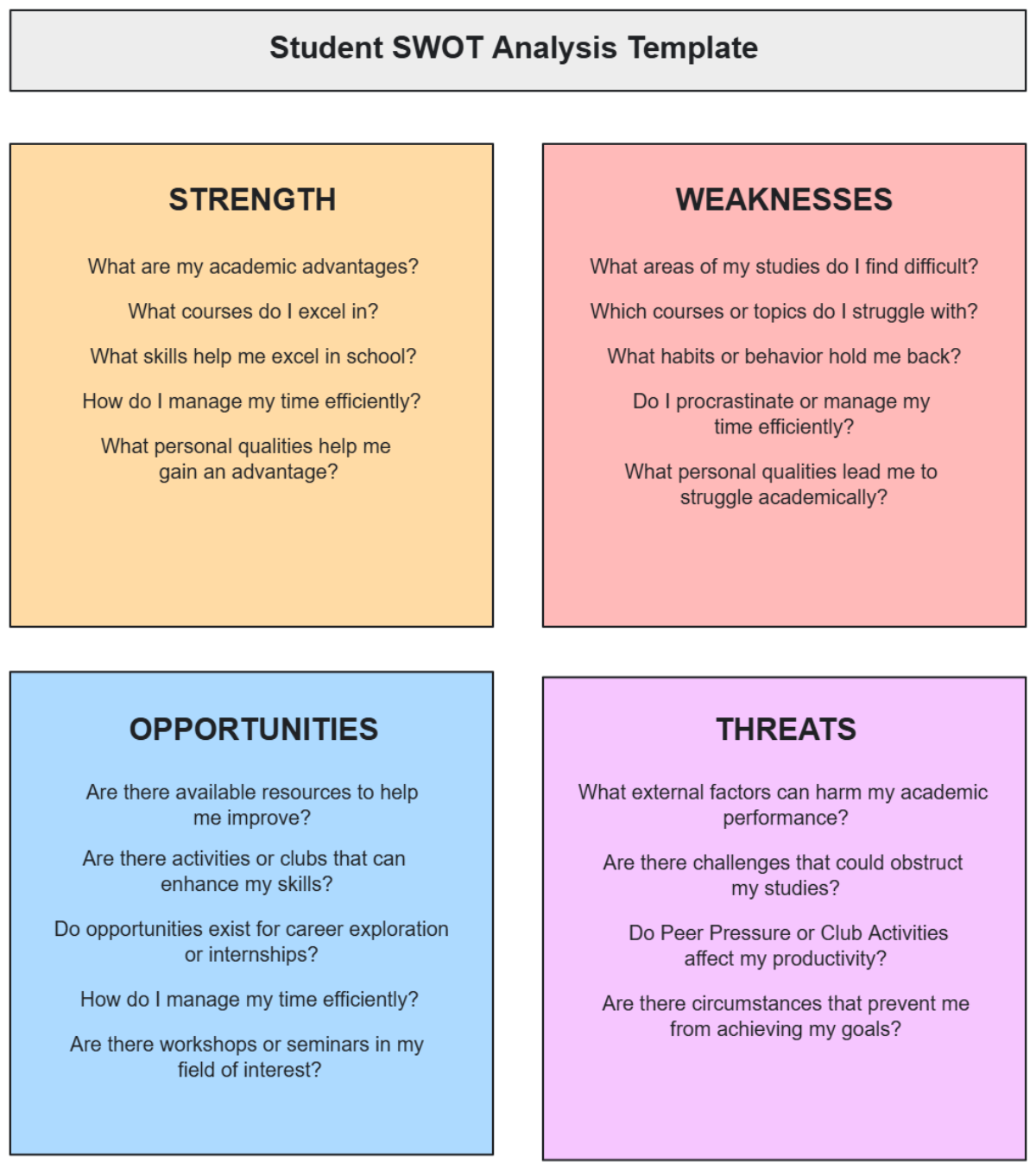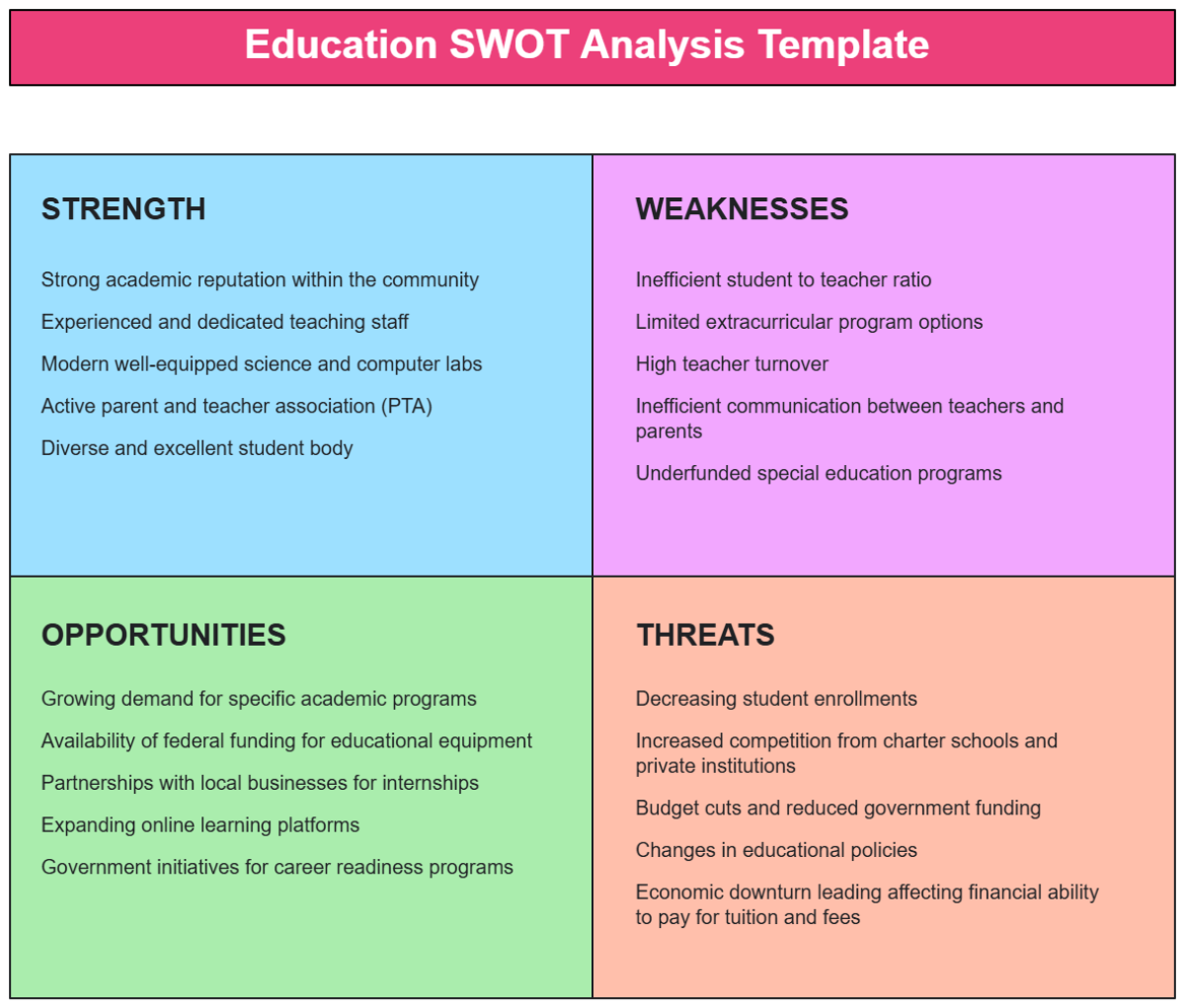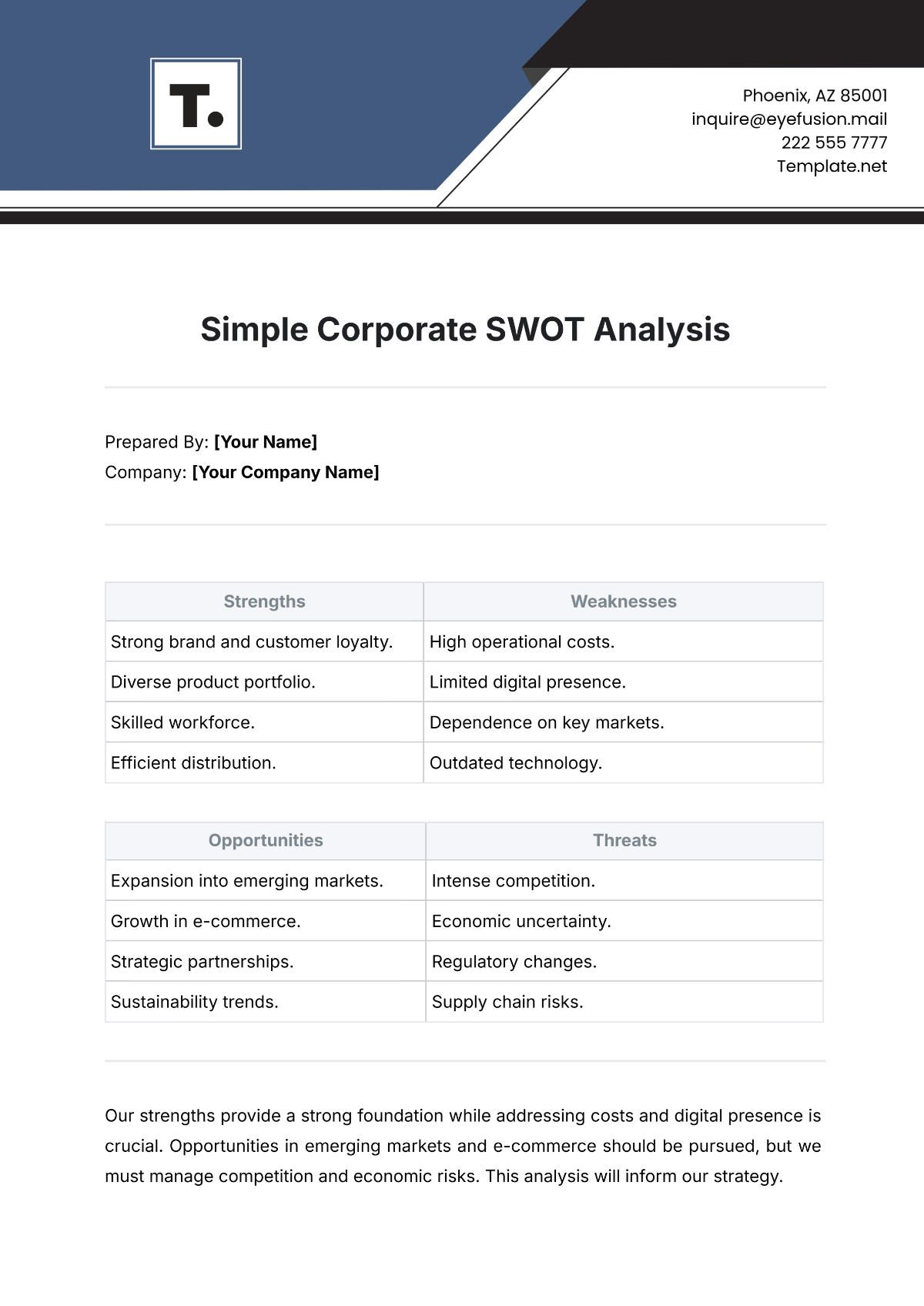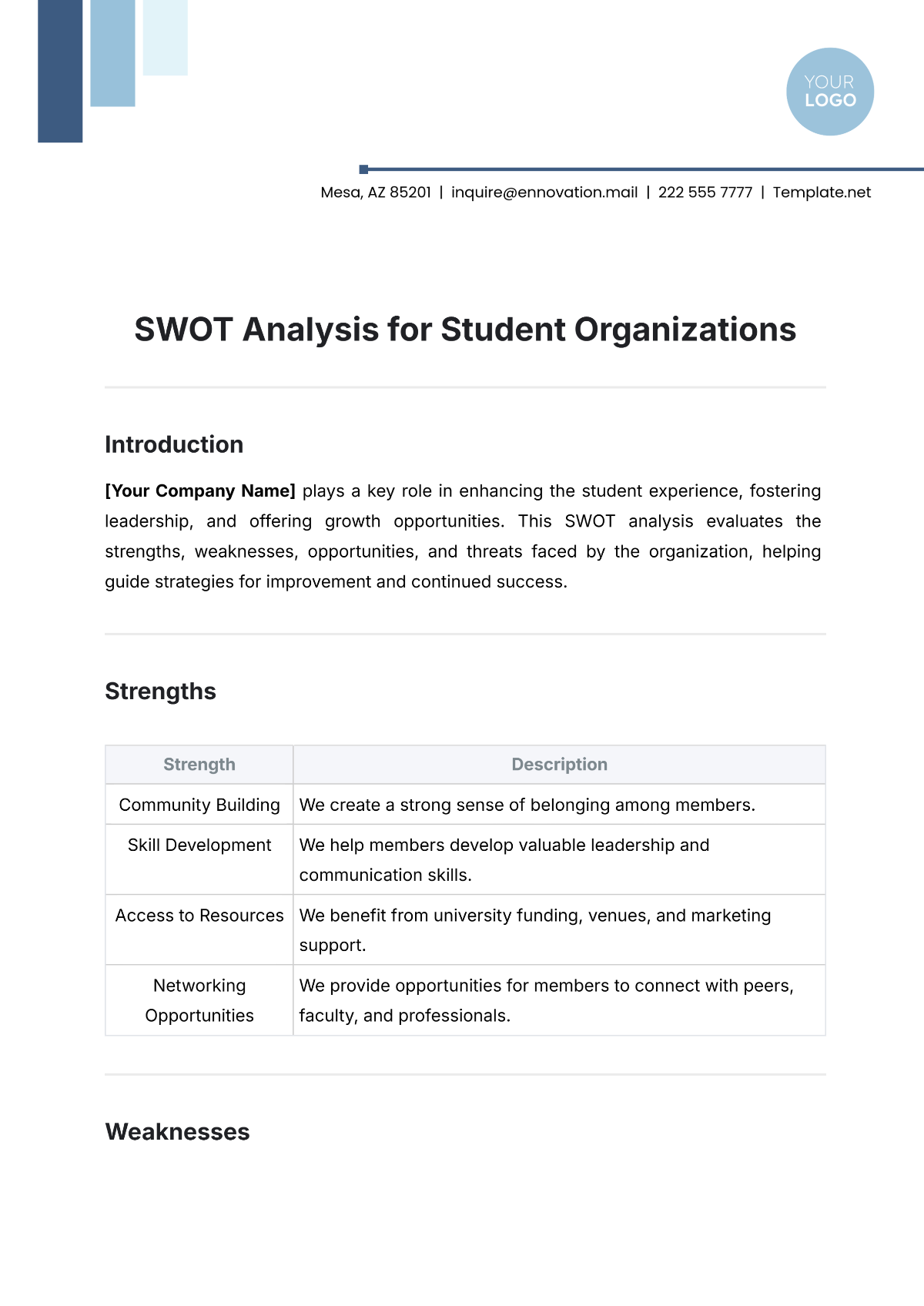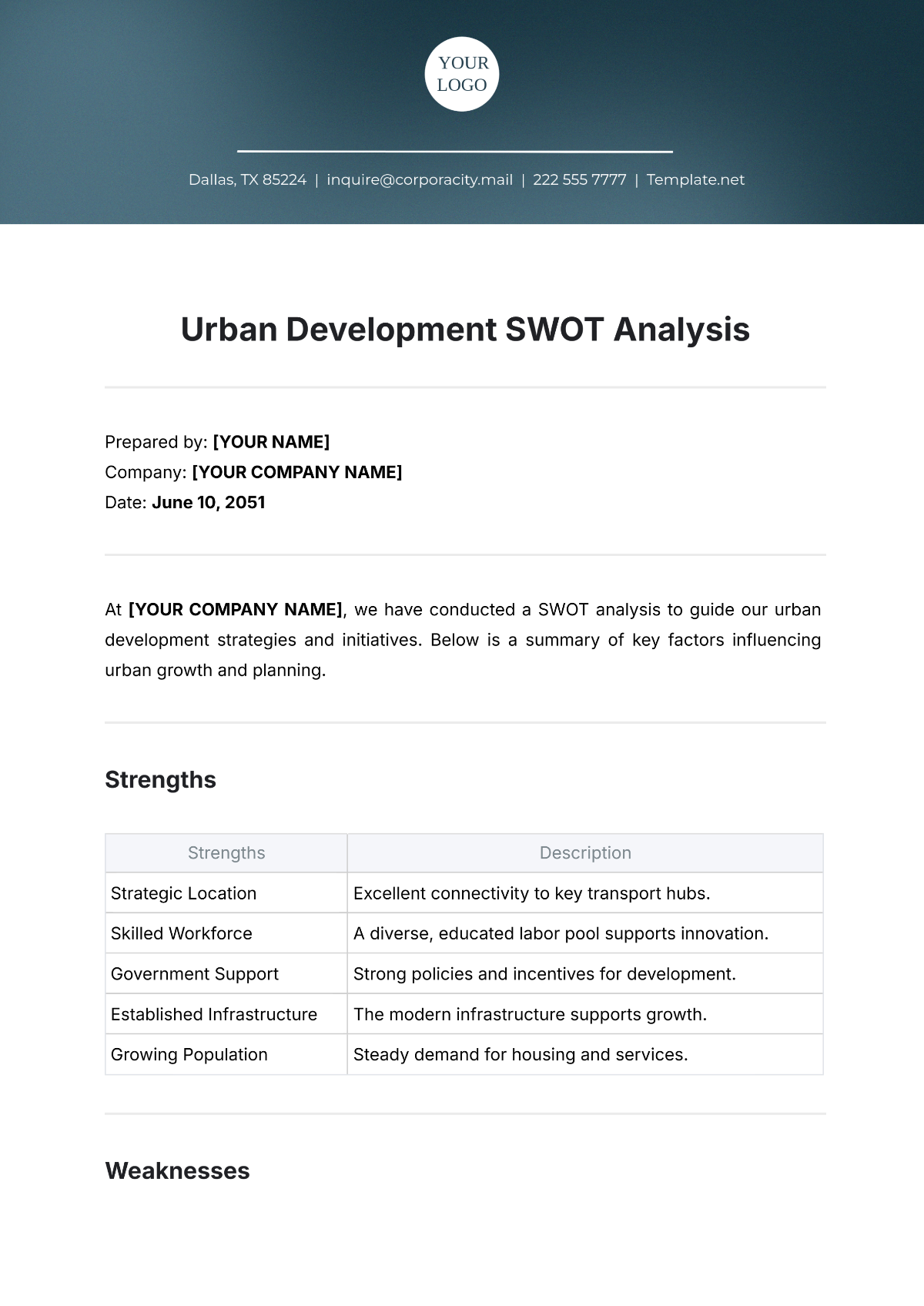Startup SWOT Analysis
I. Executive Summary
A SWOT (Strengths, Weaknesses, Opportunities, and Threats) analysis is a strategic planning tool used to identify and evaluate the internal and external factors that can impact a company’s success. For [Your Company Name], understanding these elements is crucial for navigating the challenges of the early stages of growth and positioning the company for long-term success.
II. Strengths
Strengths are the internal attributes and resources that give the company a competitive advantage. These are the factors that the startup can leverage to differentiate itself in the market and attract clients.
Specialized Expertise: The startup has a team of consultants with deep expertise in specific industries, such as technology, finance, or healthcare. This specialized knowledge allows the company to offer tailored solutions that meet the unique needs of clients in these sectors.
Agile and Adaptive Business Model: As a startup, the company is not burdened by legacy systems or outdated processes, allowing it to be more agile and responsive to changes in the market. This flexibility enables the company to quickly adapt its services to meet emerging client needs.
Strong Client Relationships: The startup has successfully established strong relationships with its initial clients, who are highly satisfied with the services provided. These relationships foster trust and can lead to long-term contracts and referrals.
Innovative Approach: The company emphasizes innovation in its consulting methodologies, incorporating the latest trends and technologies to deliver cutting-edge solutions to clients.
Strength | Impact Level (1-10) | Competitive Advantage |
|---|---|---|
Specialized Expertise | 9 | High |
Agile Business Model | 8 | Moderate |
Strong Client Relationships | 7 | High |
Innovative Approach | 8 | High |
The table provides a summary of the identified strengths, their impact level on the business, and the competitive advantage they offer. Specialized expertise and an innovative approach are particularly strong points that can help the startup stand out in a competitive market.
III. Weaknesses
Weaknesses are internal factors that could hinder the startup’s ability to achieve its goals. Identifying these weaknesses is essential for developing strategies to mitigate their impact.
Limited Brand Recognition: As a new entrant in the market, the startup has limited brand recognition, which can make it challenging to attract new clients and compete against established firms.
Resource Constraints: The company operates with limited financial and human resources, which can restrict its ability to scale operations, invest in marketing, or expand its service offerings.
Reliance on Key Personnel: The startup’s success is heavily reliant on a few key individuals, whose departure could significantly impact the company’s operations and client relationships.
Narrow Service Portfolio: The current service offerings are limited in scope, which may not fully address the diverse needs of potential clients, limiting the company’s market reach.
Weakness | Impact Level (1-10) | Risk Mitigation Strategy |
|---|---|---|
Limited Brand Recognition | 7 | Invest in Branding |
Resource Constraints | 8 | Secure Funding |
Reliance on Key Personnel | 9 | Develop Succession Plans |
Narrow Service Portfolio | 7 | Expand Service Offerings |
The table outlines the key weaknesses of the startup, their potential impact on the business, and suggested strategies for mitigating these risks. Addressing resource constraints and broadening the service portfolio are critical for future growth.
IV. Opportunities
Opportunities are external factors that the startup can capitalize on to achieve growth and improve its market position. Identifying these opportunities allows the company to align its strategies with market trends and client needs.
Growing Demand for Business Consulting: There is a growing demand for business consulting services, particularly among small and medium-sized enterprises (SMEs) seeking expert advice to navigate complex market environments. This presents a significant opportunity for the startup to target this segment.
Technological Advancements: The rapid advancement of technology offers opportunities to integrate digital tools and platforms into the consulting process, enhancing service delivery and creating new revenue streams.
Expansion into Emerging Markets: Emerging markets present untapped potential for business consulting services, as companies in these regions seek to improve their competitiveness and operational efficiency.
Strategic Partnerships: Forming strategic partnerships with other firms, such as technology providers or industry associations, can open new avenues for client acquisition and service enhancement.
Opportunity | Market Potential (1-10) | Strategic Action Plan |
|---|---|---|
Growing Demand for Consulting | 9 | Target SMEs with Customized Solutions |
Technological Advancements | 8 | Invest in Digital Tools |
Expansion into Emerging Markets | 7 | Explore Market Entry Strategies |
Strategic Partnerships | 8 | Identify Potential Partners |
The table highlights the key opportunities available to the startup, their market potential, and the strategic actions the company can take to capitalize on them. Targeting SMEs and leveraging technological advancements are particularly promising areas for growth.
V. Threats
Threats are external factors that could negatively impact the startup’s business. Understanding these threats is essential for developing contingency plans and strategies to mitigate their impact.
Intense Competition: The business consulting industry is highly competitive, with many established firms and new entrants vying for market share. This competition can make it challenging for the startup to attract and retain clients.
Economic Downturns: Economic downturns can reduce the demand for consulting services, as businesses cut costs and reduce spending on external advisors during difficult financial times.
Rapid Technological Changes: While technological advancements present opportunities, they also pose a threat as the startup must continuously adapt to stay relevant. Failure to keep up with these changes could result in losing clients to more tech-savvy competitors.
Regulatory Changes: Changes in regulations, particularly those related to business operations, data privacy, and labor laws, could increase compliance costs and impact the consulting services offered.
Threat | Severity (1-10) | Mitigation Strategy |
|---|---|---|
Intense Competition | 9 | Differentiate Through Niche Expertise |
Economic Downturns | 8 | Diversify Client Base |
Rapid Technological Changes | 7 | Continuous Learning and Adaptation |
Regulatory Changes | 6 | Stay Informed and Compliant |
The table summarizes the threats faced by the startup, their severity, and suggested mitigation strategies. Differentiation through specialized expertise and continuous adaptation to technological changes are key to maintaining a competitive edge.
VI. Overall Analysis
The overall analysis section synthesizes the insights from the SWOT analysis, providing a holistic view of [Your Company Name]'s current position and future potential in the business consulting industry. This analysis is crucial for understanding how the company can strategically navigate its strengths, weaknesses, opportunities, and threats to achieve sustainable growth and competitive advantage.
Strategic Positioning: [Your Company Name] is well-positioned to carve out a niche in the competitive business consulting market, thanks to its specialized expertise and innovative approach. The company’s agility, combined with strong client relationships, provides a solid foundation for building a distinctive brand that resonates with target clients, particularly in specialized sectors like technology, finance, or healthcare.
Growth Potential: The startup has significant growth potential, particularly if it can effectively leverage the identified opportunities such as expanding into emerging markets and forming strategic partnerships. By addressing internal weaknesses—such as limited brand recognition and resource constraints—the company can enhance its scalability and reach a broader client base. Investment in branding, marketing, and service diversification will be key to unlocking this potential.
Risk Management: While the company faces several external threats, including intense competition and economic fluctuations, these risks can be managed through strategic planning and proactive measures. The company should prioritize continuous learning and technological adaptation to stay ahead of industry changes. Additionally, diversifying its client base and staying informed about regulatory changes will help mitigate potential risks and ensure long-term stability.
Competitive Advantage: The combination of specialized expertise, an innovative approach, and a flexible business model gives [Your Company Name] a competitive edge in the market. By further refining its service offerings and enhancing client engagement, the company can differentiate itself from competitors and build a strong, recognizable brand. Maintaining this competitive advantage will require ongoing investment in talent development, technology, and strategic partnerships.
VII. Conclusion
The SWOT analysis for [Your Company Name] provides a comprehensive overview of the startup's internal strengths and weaknesses, as well as the external opportunities and threats it faces in the business consulting industry. By leveraging its specialized expertise and innovative approach, the startup can capitalize on the growing demand for consulting services. However, to achieve sustained growth, the company must address its weaknesses, such as limited brand recognition and resource constraints, while mitigating the threats posed by intense competition and economic fluctuations.













